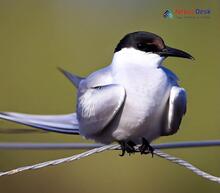Exploring the World of Chlidonias Birds: Understanding their Classification, Characteristics, and Evolutionary Ties in Nepal
The diverse and thriving bird population in Nepal makes it an ideal destination for avid bird-watchers and ornithologists. Within this incredible variety of birds lies the intriguing Chlidonias genus, which holds a special place in the world of birds. In this article, we'll delve into the classification, general characteristics, evolutionary connections, and naming conventions of Chlidonias found in Nepal.
Sorting and Naming
The Chlidonias genus is part of the Laridae family that also encompasses gulls, terns, and skimmers. There are four acknowledged species within the Chlidonias genus: Chlidonias niger (Black Tern), Chlidonias leucopterus (White-winged Tern), Chlidonias hybridus (Whiskered Tern), and Chlidonias albostriatus (Black-fronted Tern).
These extraordinary birds can be recognized by their unique looks and behavior. The term "Chlidonias" originates from the Greek word "chlidon," which means "a weather prophet," possibly alluding to their responsiveness to weather fluctuations.
Characteristic Traits
All species of Chlidonias share certain features that set them apart from other terns. Some distinguishing traits include a relatively petite body size, short legs with webbed feet, slim wings for nimble flight, and a marginally forked tail. Their feathering changes according to the season - breeding birds display darker hues while non-breeding individuals typically exhibit lighter grey or white shades.
Chlidonias birds primarily feast on small fish, water insects, and other invertebrates by diving into water or snatching prey from the water's surface. In Nepal, they breed in damp habitats such as marshes, lakeshores or riverbanks.
Evolutionary Connections
Chlidonias species have a complex evolutionary history, with continuous research revealing new information. In-depth DNA analyses have enabled scientists to identify a close bond between the Chlidonias genus and other members of the Laridae family. Intriguingly, these studies also exposed a considerable departure from their nearest relatives, including gulls and other tern genera, emphasizing their distinct position within the Laridae family.
Conservation Initiatives in Nepal
Nepal has put conservation measures in place to safeguard the amazing Chlidonias species and their habitats. Efforts involve preserving and reviving wetland habitats and maintaining continuous observation of bird populations. Educating local communities about the significance of these conservation initiatives is also crucial for ensuring the enduring existence and success of these stunning birds.
In summary, the astounding Chlidonias genus is a prime example of Nepal's abundant bird biodiversity. By comprehending their classification, attributes, and evolutionary relationships, we can further our appreciation for these mesmerizing birds and contribute to their preservation for future generations to admire.




